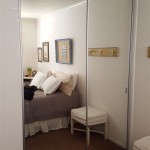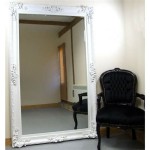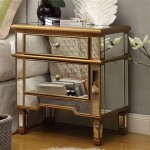Sunburst Mirror: A Timeless Statement Piece
The sunburst mirror, with its radiant, radiating design, has been a cherished decorative element for centuries. From ancient civilizations to modern interior design trends, this iconic mirror continues to captivate with its timeless elegance and ability to elevate any space. Its enduring appeal lies in its versatility, adaptability, and the unique way it interacts with light, creating a mesmerizing visual experience. This article delves into the history, stylistic variations, and enduring popularity of the sunburst mirror, exploring its evolution as a decorative statement piece.
A History of Radiance: From Antiquity to Modernity
The sunburst design, a representation of the sun's rays, has roots in ancient civilizations. The sun was a powerful symbol across cultures, often associated with life, energy, and divine power. In ancient Egypt, the sun disk, a circular object with emanating rays, was a prominent motif in art and architecture, symbolizing the god Ra, the sun god. Similarly, in ancient Greece, the sun god Helios was depicted with a radiant crown, representing the sun's rays. These early representations laid the groundwork for the sunburst motif, which would later evolve and be incorporated into various art forms.
During the Renaissance, the sunburst motif experienced a resurgence in popularity. Artists and architects embraced the motif, incorporating it into paintings, sculptures, and architectural elements. The decorative sunburst mirror, with its intricate carvings and gilded frames, emerged as a popular statement piece, adding grandeur and elegance to aristocratic homes. The sunburst motif was often interpreted as a symbol of enlightenment, knowledge, and the pursuit of intellectual and scientific advancements. This association contributed to its popularity in the Renaissance and beyond.
The Evolution of Style: From Baroque to Contemporary
The sunburst mirror has traversed various stylistic eras, each leaving its unique imprint on the design. In the Baroque period, the mirror's design became more elaborate, with intricate carvings and gilded frames. The sunburst motif was often combined with ornate floral patterns and cherubs, creating a sense of opulence and grandeur. This style was popular in palaces and grand estates, reflecting the opulent and luxurious tastes of the era.
In the 18th century, the Rococo style emerged, introducing a softer and more feminine aesthetic. Sunburst mirrors during this period were often characterized by delicate curves, pastel colors, and floral motifs. The emphasis shifted from grandeur to elegance and refinement, reflecting the shift in social tastes. This style continued to evolve during the Victorian era, incorporating more intricate detailing and ornamentation. The sunburst mirror became a popular decorative item in middle-class homes, symbolizing sophistication and taste.
In the 20th century, as design trends shifted towards modernism, the sunburst mirror evolved once again. The emphasis moved away from traditional decorative elements towards simplicity and functionality. Modern sunburst mirrors often employed geometric shapes, clean lines, and minimalist designs. Materials like metal and glass replaced ornate carvings and gilded frames, reflecting the modern aesthetic of functionality and simplicity.
The Versatility of the Sunburst Mirror: From Classic to Contemporary Interiors
A sunburst mirror's versatility allows it to seamlessly integrate into various interior design styles. Its radiant design complements classic, traditional, and modern décor. In traditional settings, a sunburst mirror can bring a sense of opulence and grandeur, while in modern spaces, it can inject a dose of drama and sophistication. Its ability to adapt to different design styles makes it a timeless decorative element that can stand the test of time.
The sunburst mirror's ability to enhance the ambiance of a space is due to its unique interaction with light. The radiating design reflects and disperses light, creating a warm and inviting atmosphere. This effect is particularly pronounced in rooms with limited natural light, where a sunburst mirror can add brightness and depth. In addition to its visual appeal, a sunburst mirror can also serve a practical purpose, reflecting light and creating the illusion of more space.
From its ancient origins as a symbol of the sun's power to its modern interpretations as a statement piece, the sunburst mirror has consistently captivated with its radiant beauty and timeless elegance. Whether incorporating a traditional or modern rendition, the sunburst mirror continues to infuse spaces with a sense of warmth, sophistication, and a touch of radiant charm.

Silver Sunburst Mirror Bamboo Sunbeam With Glamorous Metallic Look Gifting Starburst House Warming Home Decor Wall

Metal Sunburst Wall Mirror ø 80 Cm Silver Cilly Beliani Fr

Beautiful Round Silver 31 Glam Sunburst Mirror Starburst Jeweled Wall Sun

Silver Sunburst Wall Mounted Mirror Flora Furniture

Ohlson Silver Large Sunburst Mirror 90cm Luxe Collection

3pc Silver Sunburst Wall Mirrors Set Rustic Round Mirror Home Decorative Shabby

30 Glam Starburst Mirror Sunburst Wall Decor Sun Home

Emme Sunburst Mirror Silver Safavieh Target

Large Burnished Sunburst Mirror The Forest Co

26 Inch Silver Sunburst Mirror Ethan Allen Starburst








